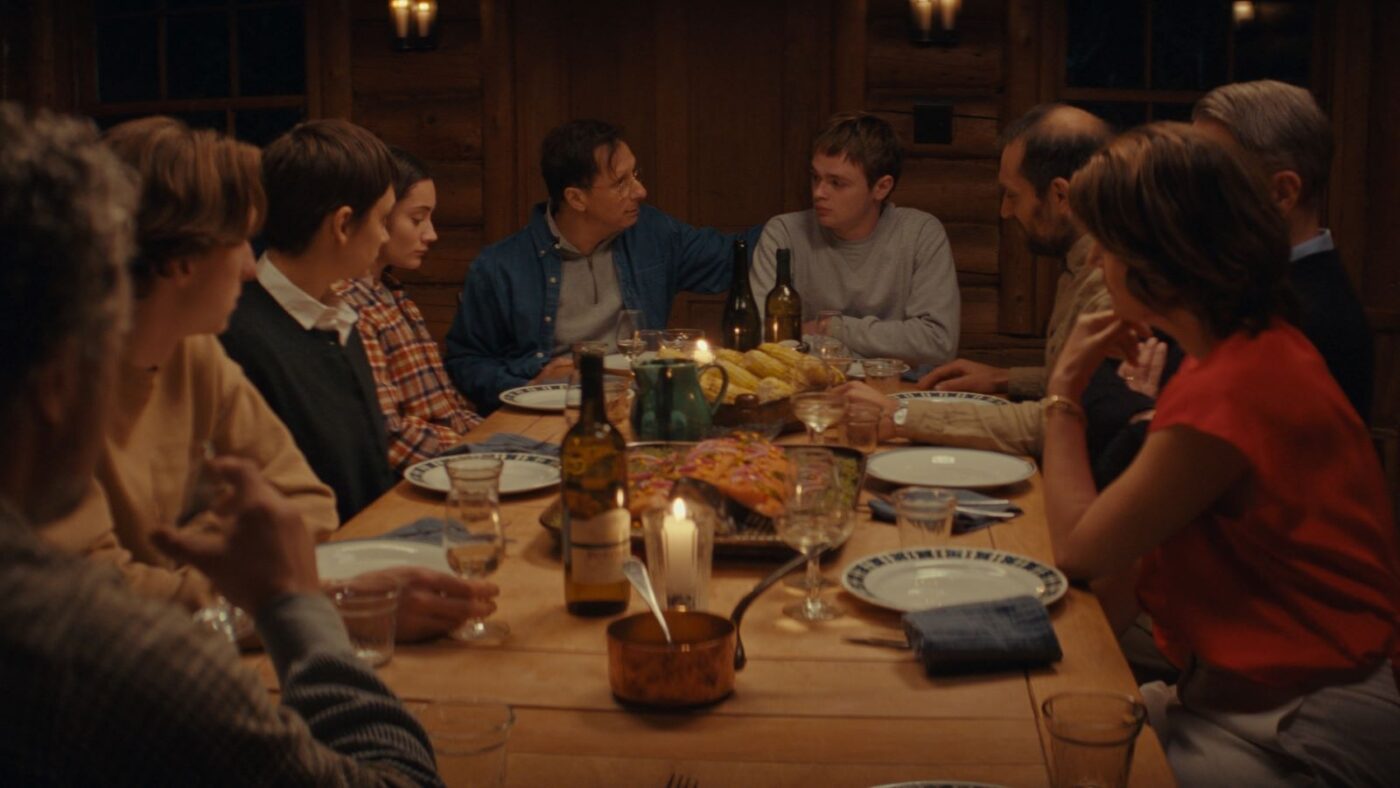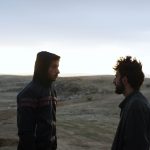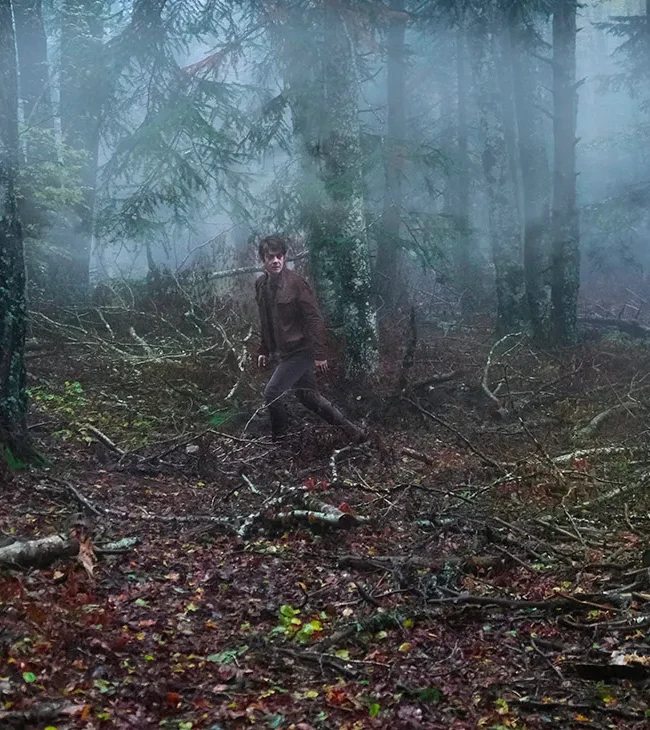WHO BY FIRE

(Check out MJ. O’Toole’s movie review of Who By Fire, now playing at NY’s Film at Lincoln Center LA’s Laemmle Theaters. Seen it? Join the conversation with HtN on our Letterboxd Page.)
French-Canadian director Philippe Lesage knows how uneasy it is to grow up. His previous two films, 2015’s The Demons and 2018’s Genesis, feature his adolescent protagonists dealing with the harsh realities of growing up around complicated adults and burgeoning romantic relationships with intricacy and psychological depth. His newest drama, Who By Fire, examines the dynamics between the two generations more up-close-and-personal. With an air of both optimism and dreariness, it’s an ensemble piece set during a scenic, yet pretty uncomfortable holiday in the Québecois wilderness. It is through this different kind of cabin fever that Lesage also explores masculinity, largely in terms of how easily men – young and older – can feel entitled, threatened, or competed against. Throughout the film’s two-and-a-half-hour runtime, we are immersed in the awkwardness and occasional fun that happens within this cabin space. Filled with gradual tension and dark humor you would find in a White Lotus episode, not much is resolved by the film’s end. But Lesage captures events with a sense of reality that there can only be a greater sense of self-awareness by the end.
The cabin where the majority of the story is set belongs to Oscar-winning filmmaker Blake Cadieux (Arieh Worthalter) who has spent the last number of years living in a self-imposed exile. His house isn’t an easy one to get to, considering you have to fly by seaplane to get there. Paying him a visit is his old friend and former writing partner Albert (Paul Ahmarani, fantastic here) whose creative collaboration with Blake ended when the latter decided to pivot to documentary filmmaking. Albert is accompanied by his two children: college-aged Aliocha (Aurelia Arandi-Longpré) and teenager Max (Antoine Marchand Gagnon), along with Max’s best friend Jeff (Noah Parker). Jeff, an aspiring filmmaker himself, is elated at the prospect of meeting his idol, Blake Cadieux. But upon spending more time with Aliocha, his intentions for the holiday begin to shift.
It isn’t very long before underlying tensions between Blake and Albert come to a head at the dinner table (a moment reminiscent of Cassavetes’ A Woman Under The Influence) when they rehash old grudges, hitting one another where it hurts the most and acting like nothing happened the next day. Adding to the holiday mix is Blake’s editor (Sophie Desmarais), then later Blake’s Paris-based actress friend (Iréne Jacob), and her partner (Laurent Lucas) who all bear witness to all this tension. Through numerous long takes that last about 10 minutes, Lesage stirs up tension gradually and visually. Working with his cinematographer Balthazar Lab, each shot is carefully staged to reveal character dynamics, as well as gorgeous landscapes.
Meanwhile, Jeff romantically pursues the sassy and strong-willed Aliocha, but she clearly doesn’t harbor the same feelings towards him, even as she wants to help him work through his sexual anxieties. Jeff however doesn’t take rejection lightly, one instance resulting in him running off into the woods, only to be found by Blake the morning after. Max is understandably weirded out about his best friend pursuing his older sister. Even though I wish his character was explored a little further, it was satisfying to see him call out Jeff on his toxic behavior at one point in the film. Dynamics between the guests become more complicated when Jeff later discovers Aliocha has her eye on someone else. When Jeff’s pursuit of love here is paved with jealousy and anger, things escalate to the point where conflicts evolve between younger and older generations filled with pettiness and romantic rivalry. Even when everyone gathers to fish, hunt, or go canoeing, Lesage plays these moments out with an air of suspense. But there are also moments of respite through the chaos. One highlight is when all the guests get down to a record-playing of The B-52’s “Rock Lobster,” one of the most invigorating moments of the film.
With Who By Fire, Lesage continues to portray youth in a convincing manner that is expressed through the ensemble’s raw and unfiltered performances, as well as what the camera reveals through its careful blocking. The tense and awkward energy between these characters is much similar to last year’s nature-set indie gem Good One. While people flee to the forest to escape the hustle and bustle, it doesn’t mean their issues won’t be waiting for them there as well. Much similar to the ending of Lesage’s previous film Genesis, some events take a sharp turn, but to an emotionally effective conclusion. Filled with terrific dialogue and pacing, Lesage has made a visually and dramatically stunning meditation on youth, aging, love, friendship, toxic masculinity, and death. By the end, the kids seem to come out of their experiences somewhat wiser than the grown-ups. From there, you can only exhale with a sense of hope.
You can also read Jack Schenker’s interview with Philippe Lesage here.
– M.J. O’Toole (@mj_otoole93)
Philippe Lesage; Who By Fire movie review











